Teaching Sustainability at Home: 6 Tips for Parents
Feb 15, 2023
For parents, thinking about taking climate action can be challenging. The dishes are piling up, the car needs repair, groceries are getting expensive, your kid’s daycare called and surprise, they’re sick again! You used to think of yourself as an environmentalist and now you think of yourself as – exhausted. All. The. Time.
But juggling parenthood and instilling a household culture of environmentalism doesn’t have to be mutually exclusive, and their co-existence doesn’t even have to be hard. Kids are watching and listening to everything we do, and we can use that to teach sustainability.
Intrigued? Check out these tips on how you teach your child to be environmentally conscious:
1. Make Sustainability Part of Your Household Routine
Taking climate action doesn’t need to be a “thing”. What I mean is that if climate action is integrated into our lives, in the little things we do and the habits we form, it becomes imprinted upon our subconscious and requires little thought or consideration. Kids learn from example, so taking small steps can make a big impact on them.
A few easy ways to integrate sustainability and environmental awareness into your daily life:
- Recycling or composting at home
- Turning off the lights when they are not being used
- Using a rain barrel to water your garden
- Use reusable bags to go shopping
- Start a backyard garden and care for it together
- Visit your local market as a family regularly, engage young children in food preparation
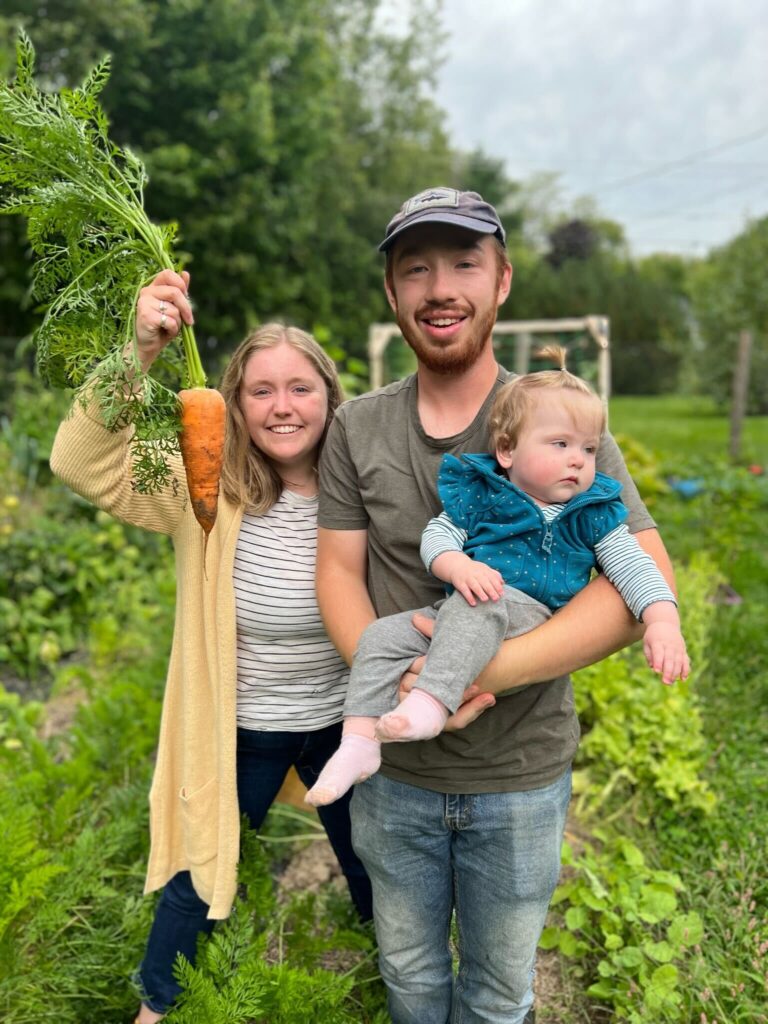
2. Spend Time Together Outdoors
There’s a certain type of play that can only occur outdoors and it’s rooted in exploration, curiosity and imagination. Children learn through play, and engaging in what nature has to offer helps children think creatively, often designing their own games or experiences. The Child Mind Institute lists outdoor play as a way to teach responsibility, build confidence and inspire a sense of wonder about nature.
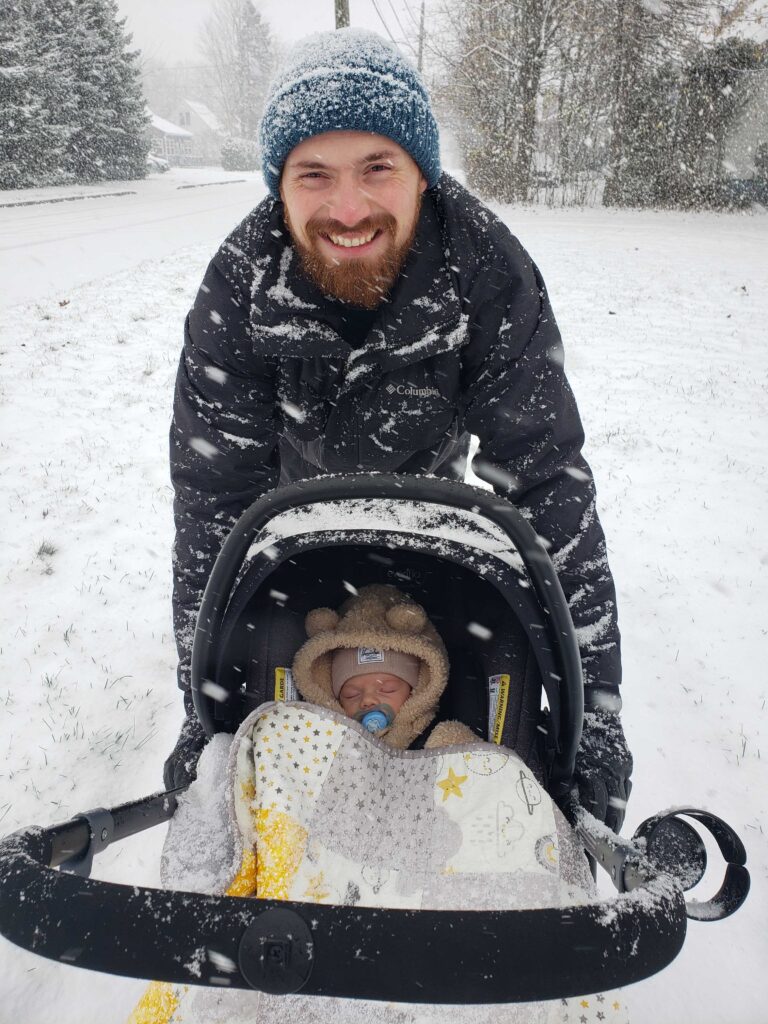
Why is this important? When children engage in outdoor activities, they are activating their five senses. They observe their surroundings, ask questions and explore. Do they hear birds? See bugs? Feel grass? When children observe the outdoors, they start to form an awareness of it. This is key to establishing a deep and respectful relationship with nature.
The Child Mind Institute also states that outdoor play is linked to reduced stress and fatigue among children. When families spend time together outdoors (whether that be hiking, ice skating, or even just having a picnic in the park), parents are modelling important ideologies about spending time in nature that kids will pick up on; it’s fun, staying active is important, we are a part of nature, and nature should be respected and appreciated… The type of value that children are gaining from outdoor play lays the framework for a healthy relationship with nature for the rest of their lives.
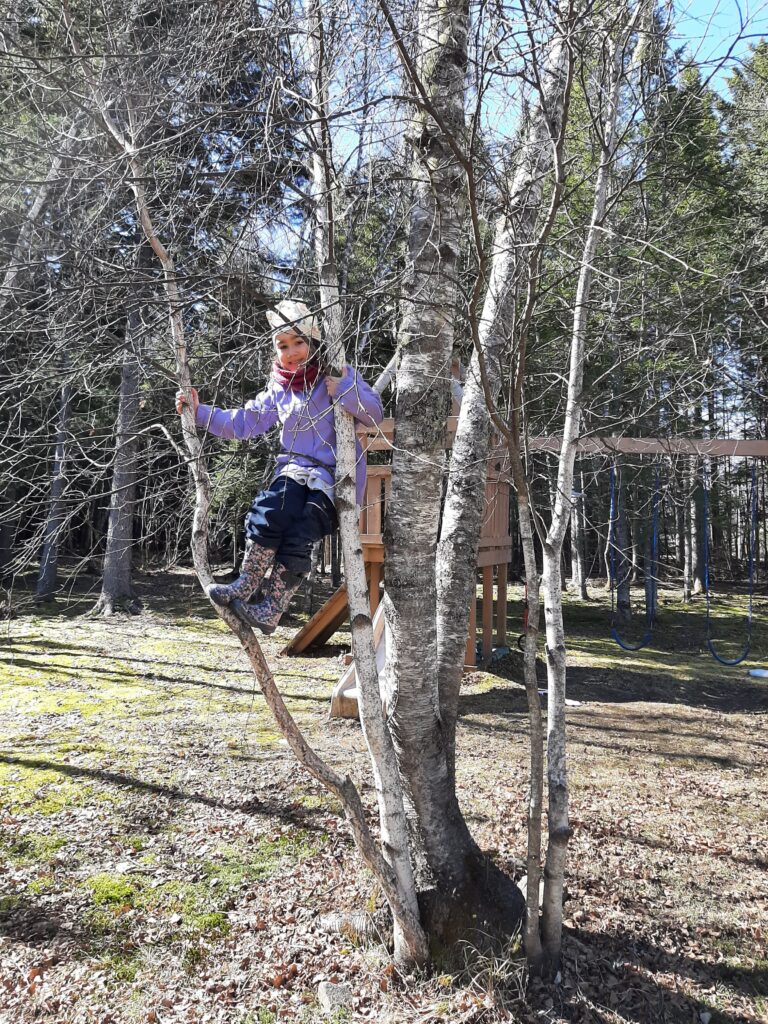
3. Read Environmental Literature to Your Kids When They Are Young
This is an easy one! Reading books with our kids is critical to language development and can help teach the values and behaviors we want to encourage. Environmental books are available for all ages and can help kids interpret the world around them, while also sparking important questions and discussions. Reading is a fun and cozy way to engage in environmental learning from the very beginning!
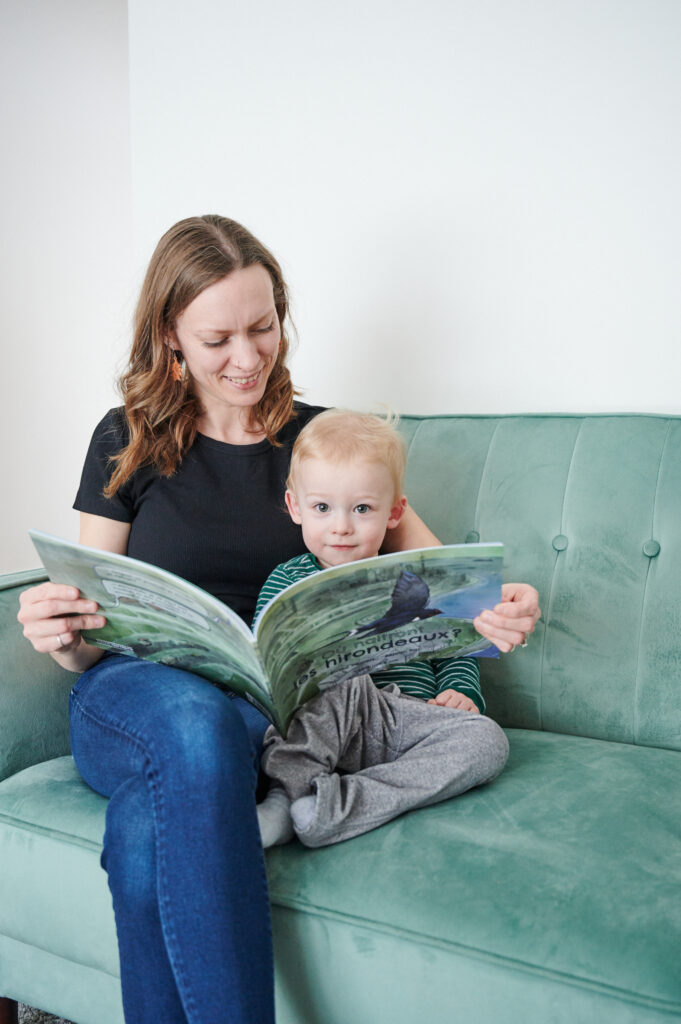
A few book recommendations for parents to read to young children:
- Greta And The Giants by Zoë Tucker
- What matters / Ce qui compte by Alison Hughes
- Swallow Finds a Nest / Où naitront les hirondeaux by Émilie Demers, Réjean Roy, Jo-Anne Elder, concept developed with The Gaia Project
4. Be Influenceable by Your Kids
While it’s important to make our children feel safe by providing guidance and structure, we don’t have to have all the answers all the time. Science evolves, and learning is a life endeavor. Teaching children that their opinions and perspectives matter helps to build confidence and self-esteem. And showing our children that it’s not only okay to change our mind, but being open to new ideas is a strength that will help equipe them to become adaptive adults who embrace change.
Climate change poses serious dilemmas that will require future generations to be solutions-focused, innovative, and agile. So, by being influenceable, we teach our children to welcome new ideas, and that diverse perspectives should be celebrated.
5. Teach Empathy and Kindness
We all teach our children the behaviors we want to see; don’t grab, take turns, be gentle… but teaching kindness and empathy require both reflection and deep conversations, which can start even during toddlerhood.
Let’s break this down a bit.
First, be kind to others. For the first few years of life, our world evolves entirely around ourselves. The concept that other people have their own experiences and feelings is something we all must learn, and it takes time.
Pets can help us teach this lesson; be gentle with the cat, say “hi” to the dog, let’s feed the fish! Taking care of a pet (or even a plant) can help children develop a sense of responsibility and empathy towards other living things. Through an intimate relationship with pets, children can form a heightened awareness of nonhuman creatures. As simple as this lesson seems, it can help to spark the notion that a much grander world that exists beyond ourselves.
Next, be kind to yourself. This is a tougher lesson and even some (arguably, most) adults need reminding from time to time. Climate action is rooted in the desire to, and belief that, we can make a positive impact through our actions. The truth is no one is perfect and that’s okay. The important thing is that we do what we can, when we can, and how we can.
Climate change is a global issue, and it can be easy to feel discouraged by our faults or feel that we just can’t do enough. But by placing such harsh and unrealistic expectations upon us, we only set ourselves up to feel inadequate or discouraged. For many, especially young people, this can cause a great deal of eco-anxiety, and completely smothers our motivation to take any action at all.
So, remember, consider how you can integrate sustainability into your lifestyle, go easy on yourself, and even small actions are worthwhile.
Lastly, be kind to nature. One of the best opportunities to teach young children to respect nature is while enjoying it. When you are spending time outdoors with your family it can be helpful to establish some ground rules; leave it how you found it, collect only what has fallen off the tree, and observe wildlife without touching it. These guidelines can help initiate conversations about how plants and animals have feelings, and nature is for everyone to enjoy (including wildlife).
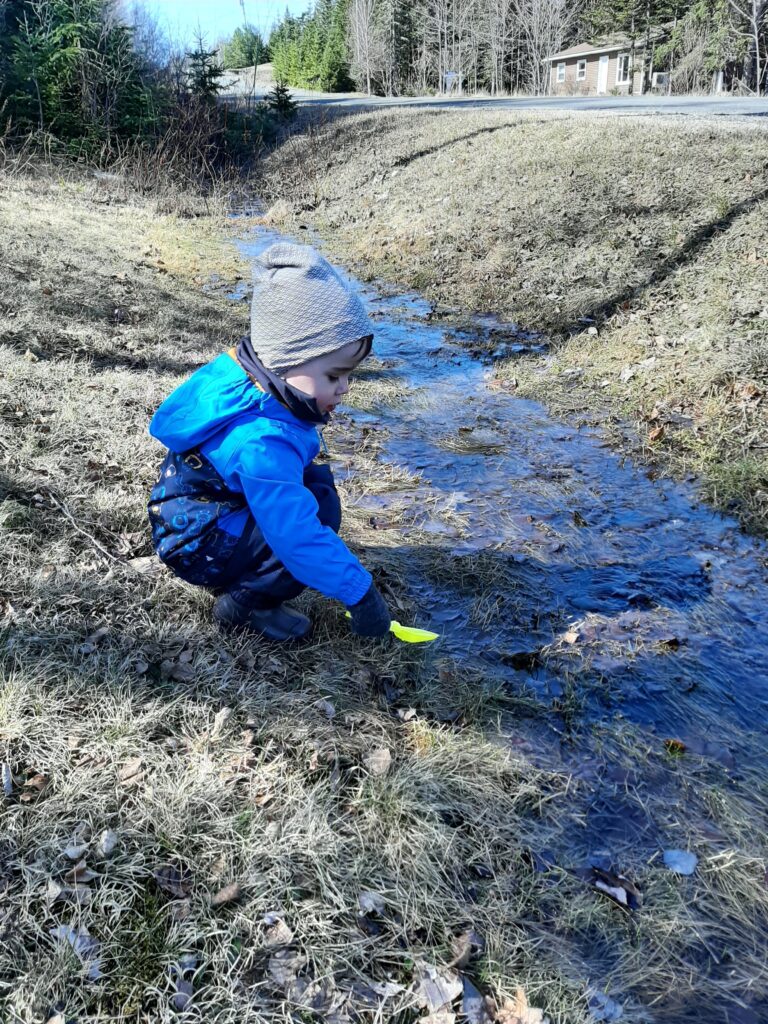
6. Ask Your Child’s Teacher to Bring The Gaia Project into Their Classroom
Are you a parent in New Brunswick with a child in grades K-12? You don’t have to teach sustainability on your own! The Gaia Project offers in-class climate action programs and downloadable resources at no cost. Our programs are hands-on, project-based and rooted in the required curriculum so teaching climate action in the classroom has never been easier. If you would like to see The Gaia Project in your child’s school we encourage you to tell your child’s teacher about us and ask them to sign up!
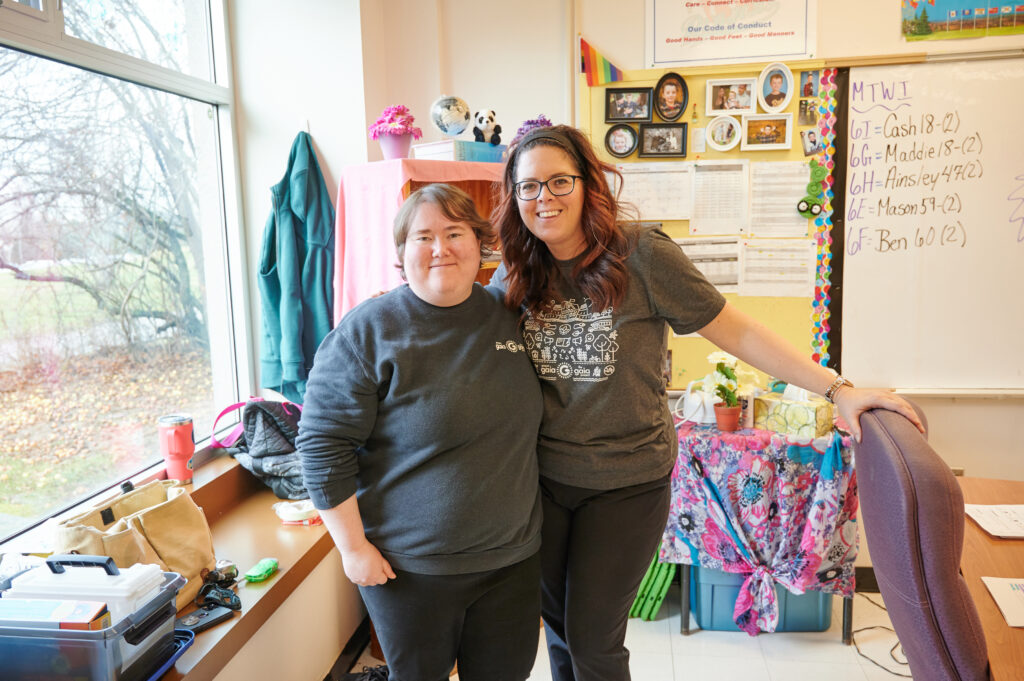
Children learn so much just from adult modelling, so the most important takeaway I hope to share is that even small behaviors can make a lasting imprint. Teaching your child to be environmentally conscious isn’t going to happen in a day. It’s going to manifest through all the little things you do and say; how you engage with nature, food, energy and waste; the stories you share; and through teaching attentiveness towards the feelings and experiences of others. Raising the next generation of climate leaders may seem like an ambitious venture, but not only can it be simple, but it can be (and should be) fun!
Reference List:
- Tracie. “The Importance of Environmental Education.” Active Family Magazine, The Growing Room, 1 June 2016, https://www.activefamilymag.com/the-importance-of-environmental-education/.
- Cohen, Danielle. “Why Kids Need to Spend Time in Nature.” Child Mind Institute, 21 Sept. 2021, https://childmind.org/article/why-kids-need-to-spend-time-in-nature/.
- “Natural Environments.” Department of Education, Victoria State Government, 16 June 2021, https://www.education.vic.gov.au/childhood/providers/regulation/Pages/naturalenvironments.aspx.
Author: Katelyn Plant, Marketing & Communications Manager, The Gaia Project
Follow us on social for more stories, news and updates:
Facebook: www.facebook.com/gaiaproject
Instagram: @thegaiaproject_
Twitter: @gaiaproject
LinkedIn: @thegaiaproject-projetgaia
TikTok: @thegaiaproject_